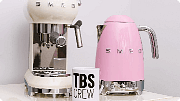
You can judge a product by its label
You can judge a product by its label
August 17, 2015By First For Women
As consumers it's overwhelming to make sense of the nutritional claims that companies use to market their products: This will nourish. That will protect. This is good for you. That is rich in fibre… It's almost impossible to make an informed decision based on what we're told because, quite frankly, it's all just sales talk, right? Wrong! According to Preetesh Sewraj, the managing director of Product of the Year, South African labels are among the most highly regulated in the world. This means that you can rest easy knowing that the information they carry is true. Preetesh gave us the low-down on how to interpret labels responsibly in our bid to make informed buying decisions for you and your family.
What labels must state
The name of the product and the name and address of its manufacturer have to appear on the label. The address is usually on the back, near the barcode. If you have any queries or complaints about the product, this lets you know how to make contact.
The label also has to tell you how to store the product, especially if it's poisonous and must be kept away from children and food.
If the product is not South African, the label has to tell you where it came from. In South Africa, labels can be in any of the 11 official languages.
A label cannot lie
South African regulations insist that a product has to be able to prove any claim that it makes. So, if you buy a known brand from a reputable store, and it says that it nourishes for 24 hours or is Low GI, you can be sure that the product does exactly that.
Recent regulation in South Africa has also declared that words like rich in, excellent source or enriched with may no longer be used on packaging, as the claim has been exploited. The only words that can now be used are free from, low in, high in and very high in.
All the ingredients are listed
Product labels whether they're on foods, cosmetics or household cleaners have to list all their ingredients. You may not know that the ingredients are listed in order of mass so the ingredient listed first comprises the largest part of the product.
Some products will list the actual percentage of important ingredients. For example, dark chocolate will tell you that it contains 80% cocoa solids. This is not a legal requirement, but the manufacturers do it when they know it might be important to you for whipping up a delectable chocolate mousse cake.
The leading allergens dairy, eggs, gluten, nuts, shellfish must be listed separately so that anyone with an allergy can avoid them. Remember, if anyone in your family is allergic to something unusual they should be advised to read the entire ingredient list before sampling any of the contents.
Additives like MSG, tartrazine and sulphur dioxide should be declared on labels, and will definitely be mentioned by name in the ingredients list.
Information about things that are important to you
South Africans are a diverse bunch, so manufacturers will let you know if a product is halaal, kosher, vegan, vegetarian, free range or organic.
Labels like endorsed by the Heart and Stroke Foundation mean that the product has been assessed by that organisation to suit a healthy lifestyle.
It's not a legal obligation for labels to state any of these things but, if they are stated, you can be sure that they are true.
Expiry dates and batch numbers
Food products have a use-by date, after which the product is seen as not fit for consumption. Always check these dates before putting food items into your trolley to avoid disappointment when you get home. Cosmetics, on the other hand, have a best-before date, after which they can still be sold, but you must be aware that the moisturiser or nail varnish might not be as soft or shiny as a new one. Also take into consideration how long the product needs to last you and then rather opt for one that hasn't gone past its best-before date.
Batch numbers are generally printed on the product in a line of ink dots. These are useful if you have a complaint so the manufacturer can work out if any other products from the same batch have also turned out badly.
The symbols on the label
Plastic packaging always has a triangle with a number inside it, which explains the type of plastic that has been used, so that recyclers can process it in the right way.
There's always a barcode, and the first three letters of the barcode show you where the product is manufactured but under South African law, the label must state the origin of the product.
When it comes to cosmetics, there's usually a symbol that looks like a canister with its lid popped open and a number and the letter m beneath it. This advises the length of time that you can use a product after opening it. You may be surprised to learn how soon your shampoo or cleanser expires!
Pay attention!
So little space, so much information! After reading this list, you'll never look at labels in the same way again. And that's a good thing you're now a more informed consumer!
























